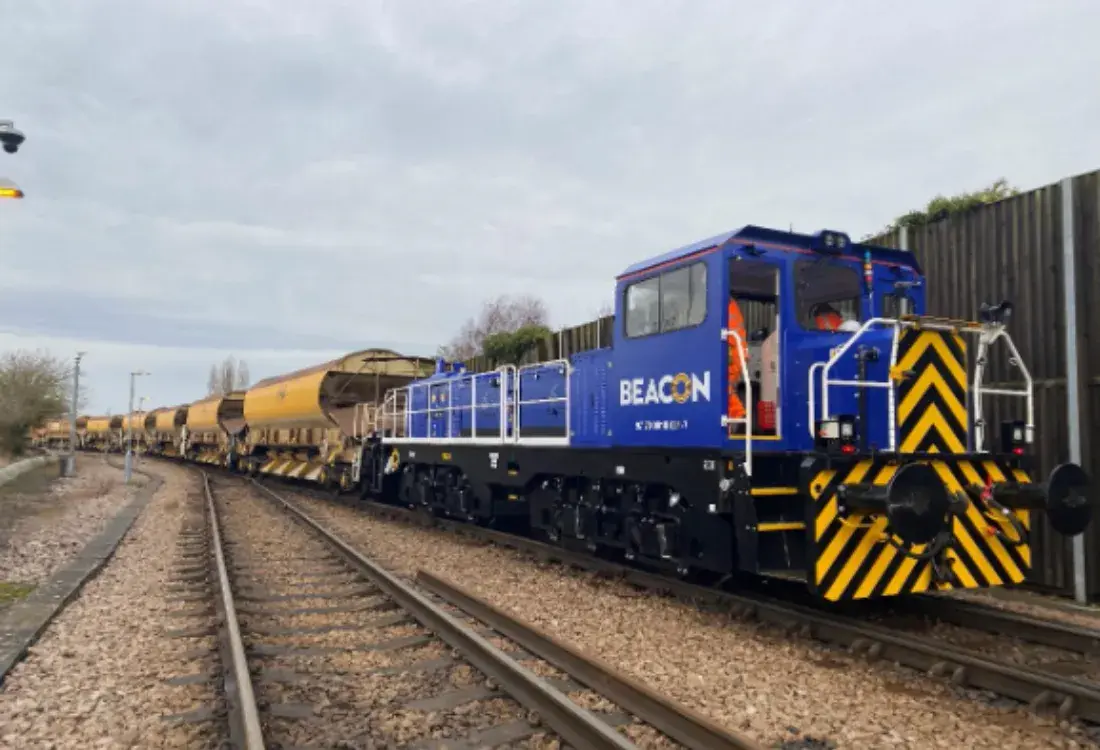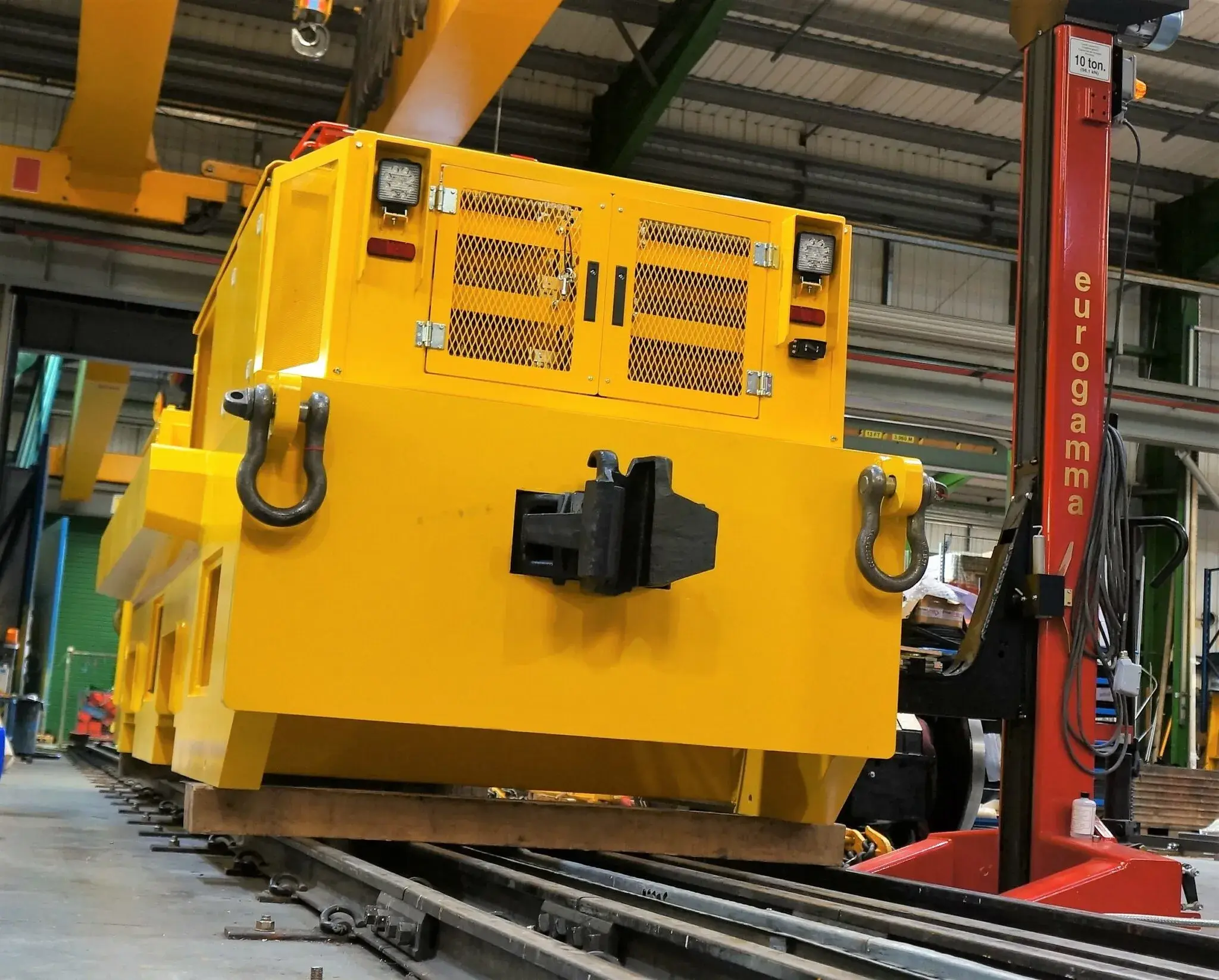The Evolution Of Mining Locomotives: Why Battery Power Leads The Way
Cleaner And Safer Operations
The key benefit of battery-powered locomotives is undoubtedly the positive environmental impact they have when compared to more traditional diesel engines. Battery-powered locomotives produce zero direct emissions, which allows mining businesses to align their operations with global efforts to combat climate change.
Beyond carbon reduction, battery locomotives eliminate diesel particulate matter (DPM) and nitrogen oxides (NOx) that pose significant health risks to underground workers. This is particularly crucial in deep mining operations where ventilation requirements are stringent and costly. The reduction in ventilation requirements can lead to substantial operational cost savings, as ventilation can account for up to 40% of a mine's energy consumption.
For operations in jurisdictions with strict emissions regulations or carbon pricing mechanisms, battery locomotives provide a pathway to compliance while avoiding potential regulatory penalties.
Efficient Performance with Advanced Battery Technology
Modern mining locomotives utilise several battery technologies, each with specific advantages for mining applications:
- Lithium Iron Phosphate (LiFePO4): Offers exceptional thermal stability and safety characteristics critical for underground environments, with cycle life typically exceeding 2,000 full discharge cycles
- Lithium Nickel Manganese Cobalt Oxide (NMC): Provides higher energy density (150-220 Wh/kg), allowing for extended operational range in a compact footprint
- Valve-Regulated Lead-Acid (VRLA): Still utilised in some applications where initial cost sensitivity outweighs long-term operational benefits
- Thin Plate Pure Lead (TPPL): Fast charging, more cost effective and maintenance free
Contemporary battery locomotives now deliver operational capacities ranging from 20 to 100 tonne haulage capabilities, with battery systems typically ranging from 50kWh to 300kWh depending on application requirements. This translates to operational shifts of 8-14 hours on a single charge for many mining profiles, with rapid charging technologies enabling mid-shift power replenishment in as little as 30-45 minutes when necessary.
Most importantly for mining operations, these battery systems are designed to maintain performance under the challenging conditions of underground environments, including temperature variations, dust exposure, and vibration—factors that would rapidly degrade consumer-grade battery systems.
Lower Cost And Less Infrastructure: The Economic Equation
While initial investment for battery locomotives may exceed traditional diesel models by 20-40%, the long-term economics present a compelling case for transition:
The reduction in moving parts is substantial—a typical diesel locomotive may contain 2,000+ moving components in its powertrain, while electric drivetrains in battery locomotives often reduce this to fewer than 200. This translates to maintenance requirements decreasing by 40-60% and scheduled downtime reductions of similar magnitude.
Electricity costs per operational hour typically run 65-75% lower than equivalent diesel fuel costs, while regenerative braking systems can recapture 15-25% of energy during downhill operations, further reducing consumption. The regenerative braking system also reduces brake wear by up to 60%, extending the life of these critical components and reducing particulate emissions from brake pads.
For mines establishing new operations, the infrastructure requirements present additional advantages. Battery locomotives eliminate the need for:
- Diesel storage facilities and associated environmental containment
- Extensive exhaust ventilation systems
- Underground refuelling stations and their inherent safety challenges
Industrial-Grade Battery Systems
Battery locomotives for mining applications utilise industrial-grade systems engineered specifically for this demanding environment:
- Thermal management systems designed for operation in ambient temperatures ranging from -20°C to +40°C
- Engineered safety systems including physical cell separation, thermal runaway prevention, and explosion-proof enclosures meeting ATEX and IECEx standards
- Battery management systems (BMS) with cell-level monitoring and advanced diagnostics
- IP67-rated enclosures protecting against dust and water ingress
- Structural reinforcement to withstand the vibration and impact typical in mining operations
These systems are fundamentally different from consumer electric vehicle batteries, with designs prioritising safety, longevity, and reliability over absolute energy density.
Noise Reduction: An Operational Advantage
Another major environmental benefit is the reduction in noise pollution associated with diesel engines. Battery locomotives typically operate at 68-72 dB compared to 95-105 dB for diesel equivalents—a logarithmic difference representing an approximately 90% reduction in perceived noise levels.
This has significant operational implications beyond regulatory compliance:
- Improved communication safety between operators
- Reduced hearing protection requirements
- Decreased noise-induced fatigue among workers
- Enhanced ability to detect auditory warning signals and potential ground movement
Complete Lifecycle Considerations
When evaluating battery locomotives, it's essential to consider the complete lifecycle implications:
Battery systems for mining locomotives are increasingly designed for serviceability, with modular construction allowing for individual cell replacement rather than complete system disposal. End-of-life management pathways include:
- Second-life applications for batteries that no longer meet mining performance requirements but retain 70-80% capacity
- Established recycling processes recovering up to 95% of critical materials including cobalt, nickel, and lithium
- Manufacturer take-back programmes reducing end-user disposal responsibilities
Properly managed, the lifecycle environmental impact of battery locomotives—including manufacturing and disposal considerations—can achieve a 60-70% reduction in overall environmental footprint compared to diesel alternatives over a typical 15-year operating life.
Industrial-Grade Power in Challenging Environments
For operations in extreme conditions, modern battery locomotives deliver consistent performance where diesel units often struggle:
- At high altitudes, where diesel engines lose efficiency due to oxygen reduction, battery systems maintain full power output
- In extremely cold environments, properly designed battery thermal management systems enable operations without the cold-start issues that plague diesel engines
- On steep gradients, electric motors deliver maximum torque at zero speed—precisely when it's most needed—unlike diesel engines that require maintaining RPM bands
If you would like to know more about the potential of a battery locomotive for mining then get in touch with a member of our team to discuss your options. Alternatively, you can download our free information leaflet to discover more.
- News (100)
- Battery Locomotives (31)
- Low Emission Rail (21)
- Shunting Locomotives (10)
- Mining Locomotives (9)
- Diesel Locomotives (8)
- LocoWatch (4)
- Battery Locomotives Battery Locomotives (3)
- IoT Telematics (3)
- Sustainability (3)
- Case Study (2)
- Haulage (2)
- 90 Years (1)
- Clayton Equipment (1)
- Shunting Locomotives Shunting Locomotives (1)
- Switcher Locomotives (1)
- Telematics (1)
- July 2025 (1)
- June 2025 (4)
- May 2025 (1)
- April 2025 (2)
- February 2025 (1)
- January 2025 (1)
- September 2024 (1)
- August 2024 (2)
- July 2024 (2)
- June 2024 (2)
- May 2024 (1)
- April 2024 (1)
- March 2024 (1)
- February 2024 (1)
- January 2024 (4)
- November 2023 (1)
- September 2023 (1)
- August 2023 (2)
- July 2023 (2)
- June 2023 (2)
- May 2023 (2)
- March 2023 (2)
- February 2023 (3)
- January 2023 (2)
- November 2022 (2)
- October 2022 (1)
- August 2022 (1)
- July 2022 (4)
- June 2022 (1)
- May 2022 (1)
- April 2022 (2)
- March 2022 (3)
- February 2022 (8)
- January 2022 (1)
- November 2021 (3)
- October 2021 (1)
- September 2021 (3)
- August 2021 (7)
- July 2021 (7)
- June 2021 (7)
- April 2021 (1)
- January 2021 (1)
- December 2020 (2)
- August 2020 (1)
- March 2020 (4)
- February 2020 (3)
- January 2020 (4)
- December 2019 (1)
- November 2019 (2)
- October 2019 (3)
Subscribe by email
You May Also Like
These Related Stories

Improve Locomotive Maintenance And Operational Efficiency With LocoWatch

Future of Mining - The Electric Mine Conference





No Comments Yet
Let us know what you think